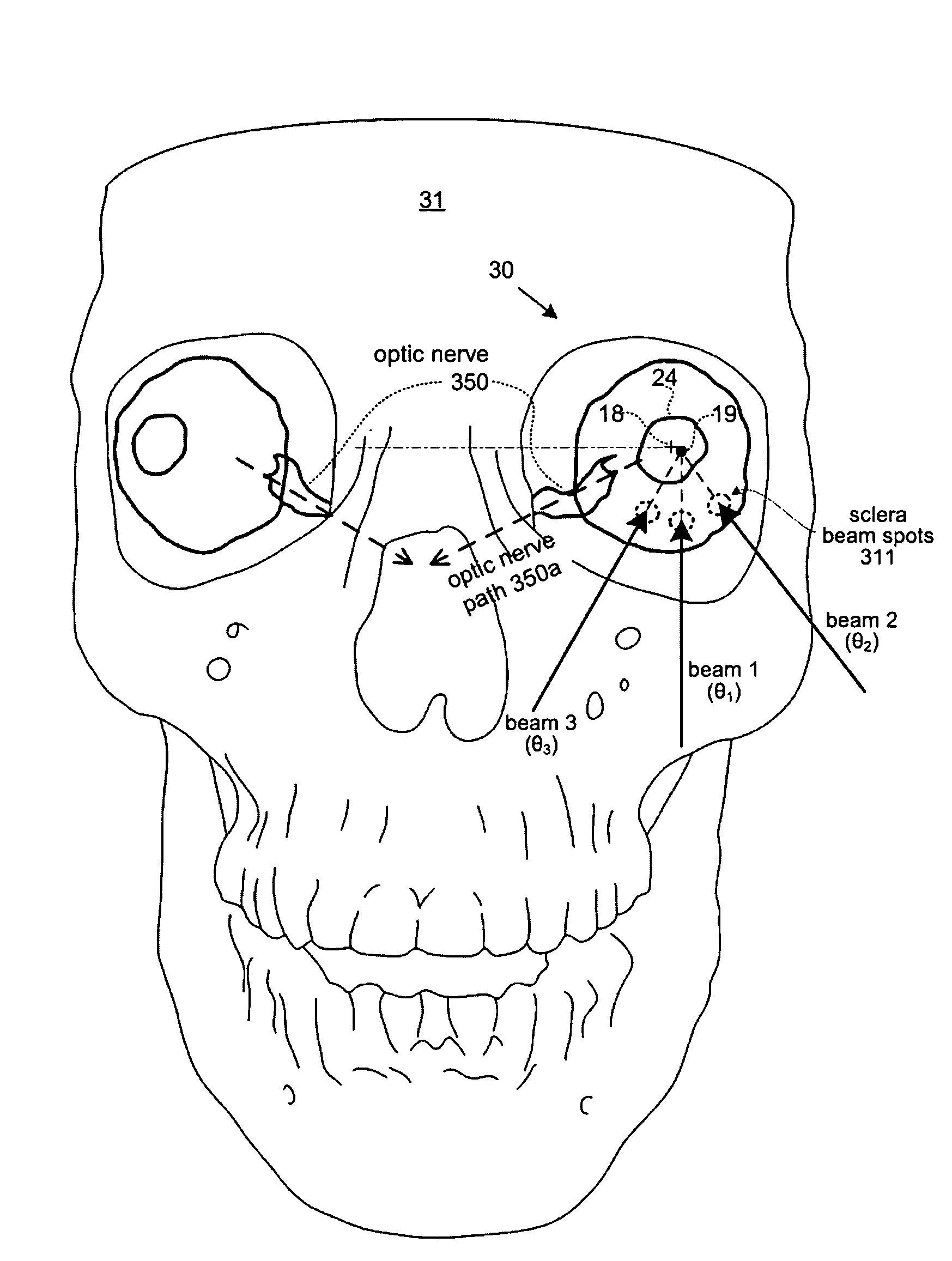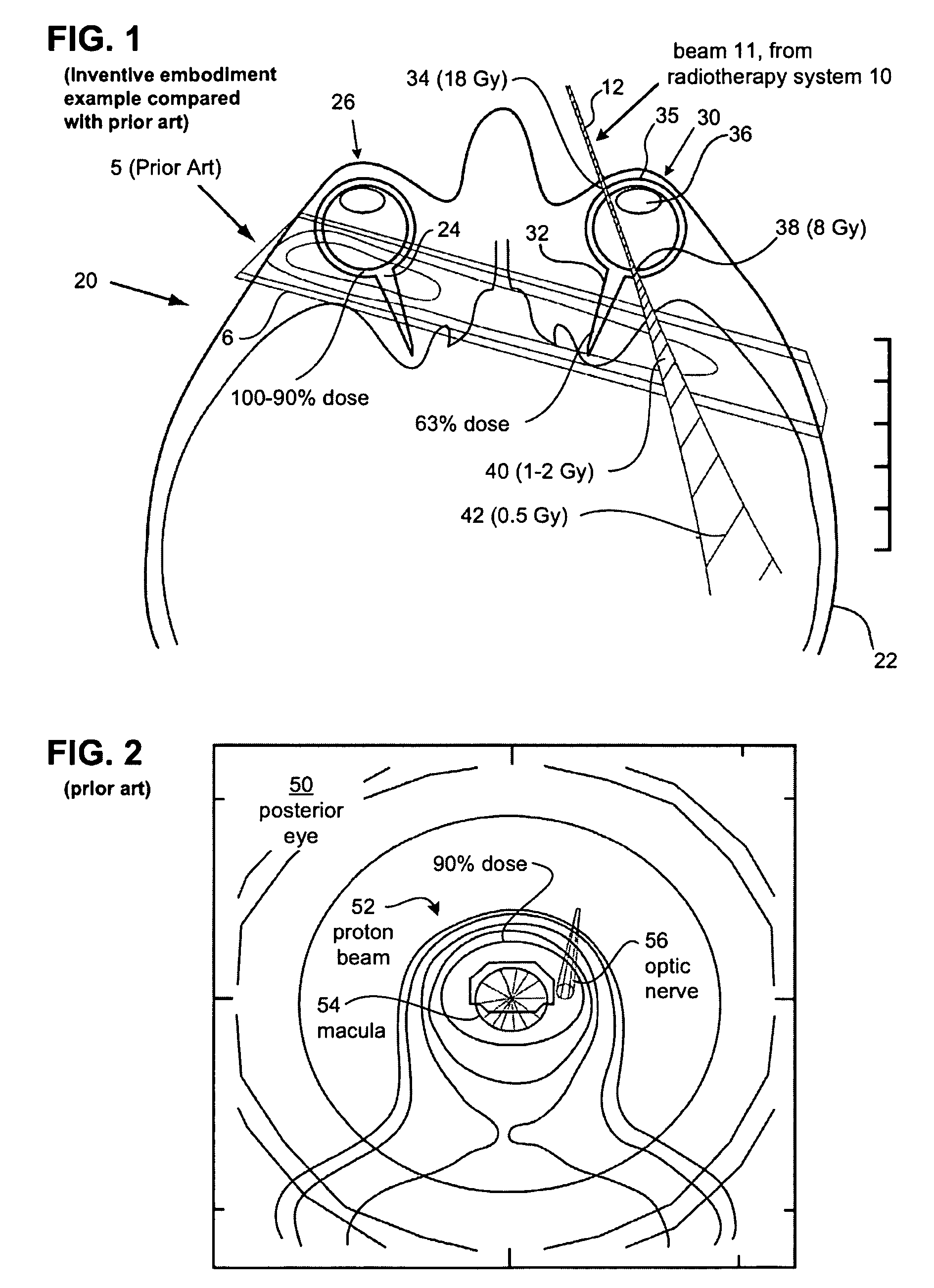Methods and devices for orthovoltage ocular radiotherapy and treatment planning
a technology of which is applied in the field of methods and devices for orthovoltage ocular radiotherapy and treatment planning, can solve the problems of limited, if any, verification of the orientation of the eye, lack of efficacy in those studies, and substantial irradiation of non-targeted structures, so as to reduce eye motion
- Summary
- Abstract
- Description
- Claims
- Application Information
AI Technical Summary
Benefits of technology
Problems solved by technology
Method used
Image
Examples
embodiment 118
[0258]For example, a collimator embodiment 118 comprises aperture 1405 which provides crescent-shaped beam exit pattern configured to minimize dosage to the optic nerve adjacent a nearby retinal treatment target. The beam pattern created by aperture 1405 includes a maximal dose-intensity region which is shaped to match a retinal target lesion, and a corresponding minimal dose-intensity region of the pattern is shaped to align with the optic disk, thereby sparing that structure. The aperture 1405 may be rotated as mounted in the outer portion 118b, so as to align a minimal-intensity region of the pattern with the optic disk. Rotation of portion 118b may thus compensate for overall rotation of the collimator during repositioning of the X-ray source for successive stereotactic treatments.
[0259]FIG. 29A is a plot showing the results of a Monte Carlo computational simulation for absorption of X-ray energy in a configuration generally similar to that shown in FIG. 21. See description abov...
exemplary embodiment 625
[0345]FIGS. 40A-B illustrate perspective views of an exemplary embodiment 625 having aspects of the invention of a contact device or eye-guide and eye alignment and stabilizing module configured for use with system 10 (it additionally may be usefully employed independent of system 10). This may be used together with head-chin restraint device 160, which includes a head support or support 170 for stabilizing the head of subject, and includes a chin rest 172.
[0346]FIGS. 40A-B and 41A-B depict one example embodiment of an method of aligning and / or stabilizing a patients eye 30 and engaged eye-guide 110 with the coordinates of radiotherapy system 10, using a laser beacon 150 a mechanism by which the contact device 110 can be used to align the eye with laser alignment system 800, including laser device 150 (alternative image-based alignment subsystems are described herein). Optionally, the alignment mechanism also directly aligns a treatment system, such as a radiotherapy system (not sho...
PUM
 Login to View More
Login to View More Abstract
Description
Claims
Application Information
 Login to View More
Login to View More - R&D
- Intellectual Property
- Life Sciences
- Materials
- Tech Scout
- Unparalleled Data Quality
- Higher Quality Content
- 60% Fewer Hallucinations
Browse by: Latest US Patents, China's latest patents, Technical Efficacy Thesaurus, Application Domain, Technology Topic, Popular Technical Reports.
© 2025 PatSnap. All rights reserved.Legal|Privacy policy|Modern Slavery Act Transparency Statement|Sitemap|About US| Contact US: help@patsnap.com



